How To Draw A Space Rover Step By Step
The USA's Perseverance rover has successfully landed on Mars with a helicopter called Ingenuity strapped to its belly. The Mars 2020 mission is seen as a first step towards bringing samples of Martian rock back to Earth.
It may be last but by no means least — NASA's Mars 2020 is the third mission to have successfully arrived at the Red Planet in the space of 10 days. It's the USA's largest Mars rover and it's carrying the first-ever Mars helicopter.
The "show," as NASA put it, started late morning Pacific Time (early evening in Central Europe). But it was another two hours before the USA's latest rover, Perseverance, touched down on the surface of Mars at 20:56 UTC.
To land on Mars, the rover started its descent at a speed of over 20,000 kilometers per hour (12,000 miles per hour). A parachute and a powered descent mechanism then slowed the rover to about 3 km/h before a large sky crane lowered it on three bridle cords down to the surface of the planet, touching down on its six wheels.
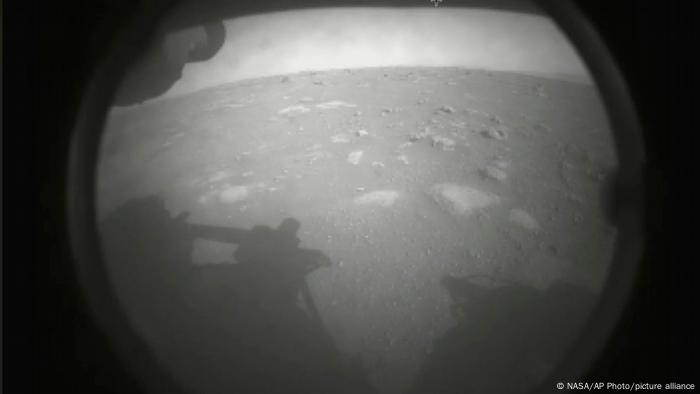
This photo made available by NASA shows the first image sent by the Perseverance rover showing the surface of Mars, just after landing in the Jezero crater
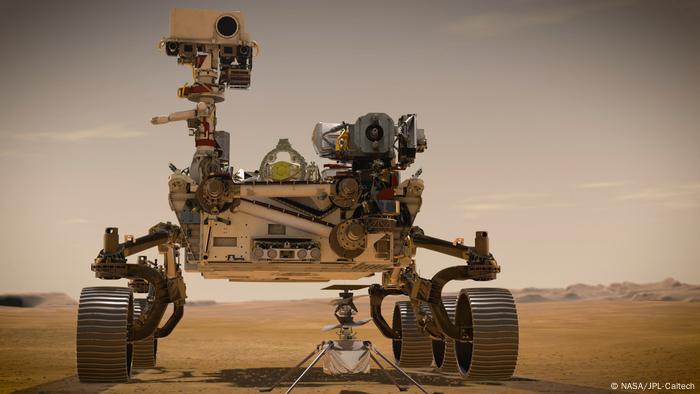
Martian duo: NASA's new rover, Perseverance, and helicopter, Ingenuity
Popular landing site
As planned, Perseverance landed at Jezero Crater, just north of the Martian equator, in a region called Isidis Planitia.
It's a region well-traveled by American landers, including the Curiosity rover, which is still active. But Curiosity is about 3,700 kilometers (2,300 miles) away at Gale Crater.
Utopia Planitia is also not too far away, relatively speaking. That's where China intends to land its first Mars rover in May.
Three missions
Three Mars missions launched in July 2020. Aside from NASA's Mars 2020, there is the Emirates Mars Mission and China's Tianwen-1.
The UAE and Chinese missions are centered around spacecraft orbiting the Red Planet. But as mentioned above, Tianwen-1 will also attempt to land a rover on Mars later this year.
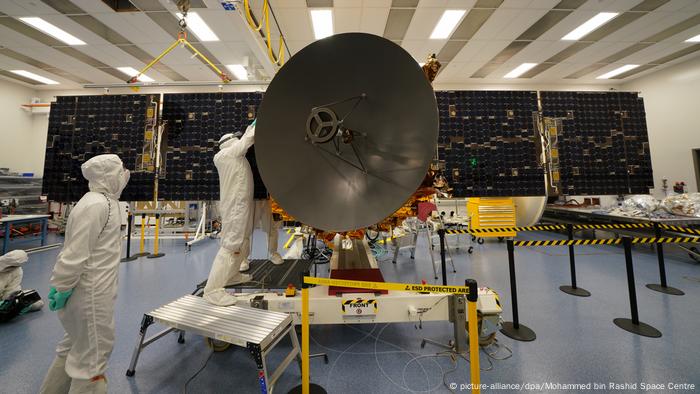
The UAE's Hope Probe: One of three current Mars missions
By far the more experienced Mars explorer is the USA. And they have gone straight for the jugular, and that with an added bonus.
First, it's landed Perseverance, NASA's largest-ever Mars rover. The rover will search for water and other signs of life below the surface of the planet.
For future missions
It will also collect rock and soil samples and deposit them in canisters, which — it is planned — will be collected by joint US and European missions and brought back to Earth within the next 10 years.
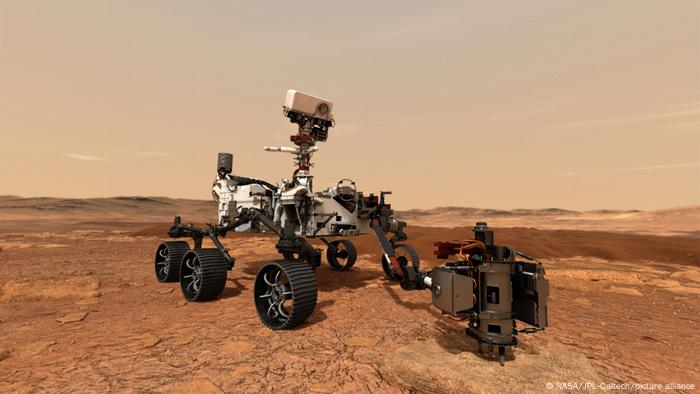
The Perseverance rover drilling for rock: It's the first step in USA/European missions to bring Martian samples back to Earth
Then, there's that helicopter, Ingenuity, strapped to the belly of the rover.
The helicopter is an experimental device that NASA wants to use to learn about taking off and flying in the Martian atmosphere. That's significant because the atmosphere there is far thinner than that on Earth, and that can affect flight — the amount of power and lift you need, and the speed at which the helicopter blades rotate.
Whether it works or not is almost irrelevant at this stage, because no matter what happens, it will be the first time any spacefaring nation will have tested flight "on another world," as the American space agency has described it.
Beyond that, those test flights will potentially pave the way for future missions with astronauts going to Mars and coming back, even if that's in 30 years' time.
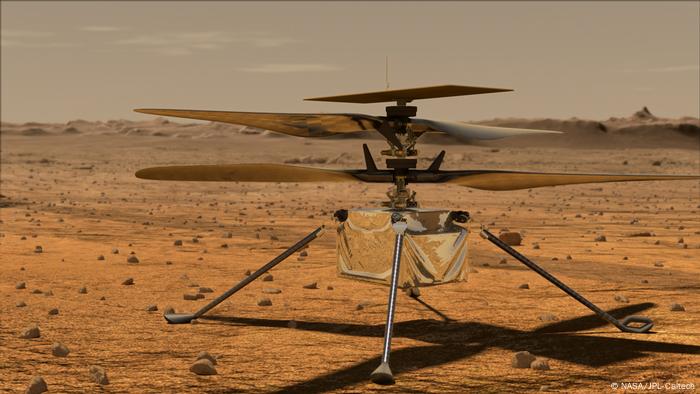
The Mars helicopter is more like a drone, but it's hoped it will deliver valuable knowledge about flying on another world
Collaborating endeavors
The Emirates Mars Mission involves a satellite called Hope. It was the first of these three missions to successfully arrive at Mars when it entered the planet's orbit on February 9, 2021.
It will spend two years running tests at various altitudes and aims to provide the global science community with the first complete picture of the Martian atmosphere.
It's also pegged to the UAE's ambition of moving away from a hydrocarbon economy towards a knowledge-based economy. It's formed a number of international collaborations with universities in the USA and elsewhere to help it do that.
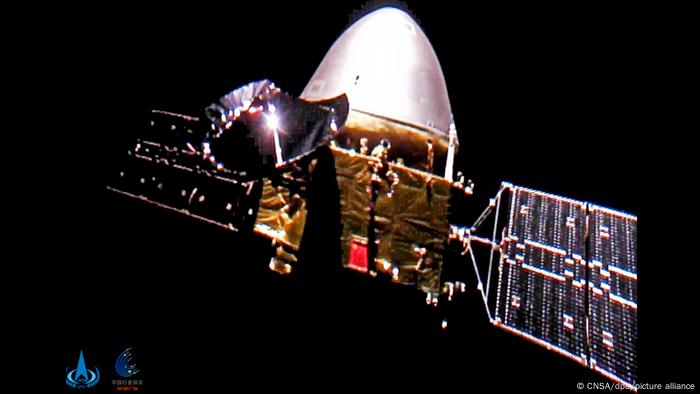
China's Tianwen-1 Mars probe
On February 10, 2021, the Tianwen-1 orbiter entered its orbit of Mars. The Chinese orbiter will also investigate the Martian atmosphere. And in three months, it is scheduled to land China's first rover on the planet as well.
As with NASA's Perseverance rover, China will be searching for signs of life on Mars, including water below the surface of the planet.
Competing for the stars
A number of countries and organizations have expressed an interest in working with China on its space exploration missions.
Some sources have suggested, however, that if any fears of a new space race were justified, China would be one of the main competitors — possibly with the rest of the world on the other side.
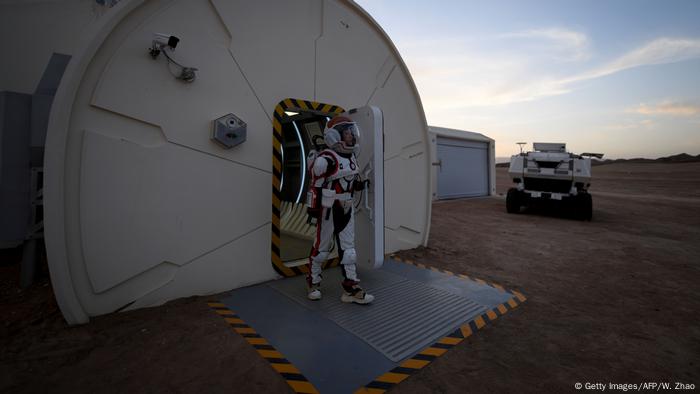
A woman wearing a spacesuit walking out of "Mars Base 1", a C-Space Project, in the Gobi Desert
One reason for that particular suspicion is that while the USA and Europe are collaborating on a new "Artemis" moon program, which includes ground and orbiting bases, China looks set to establish its own bases in space.
But that is a very closed view. There are many other countries in the space community, including India and Israel, and most recently even Turkey has announced a new space program.
Most experts view any success in space as a success for all humankind, no matter how the knowledge and spoils are shared.
NASA points out that only about 40% of the missions ever sent to Mars — by any space agency — have been successful. So, every attempt can be applauded, if it's done for the right reasons and where the money is not better spent elsewhere. It's perhaps telling that even with the USA's track record in space, Perseverance is only the fifth NASA rover to have attempted — and now succeeded — to land on Mars.
-
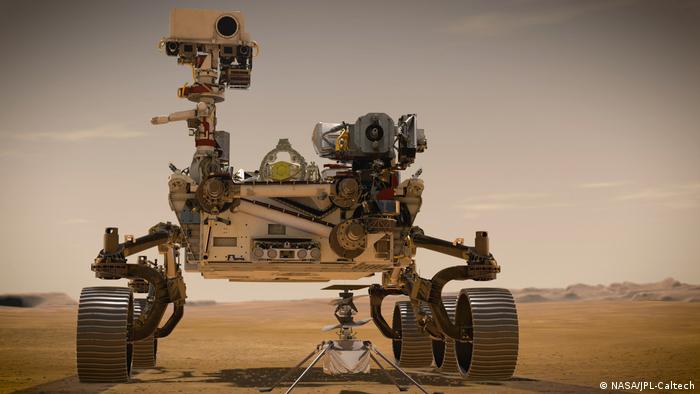
NASA's rover Perseverance has landed on Mars
A new rover for the red planet
NASA's Mars 2020 Perseverance rover (shown in artist's illustration) is the most sophisticated rover NASA has ever sent to Mars. Ingenuity, a technology experiment, will be the first aircraft to attempt controlled flight on another planet. Perseverance touched down at Mars' Jezero Crater on February 18, 2021 at about 20:57 UTC with Ingenuity attached to its belly.
-
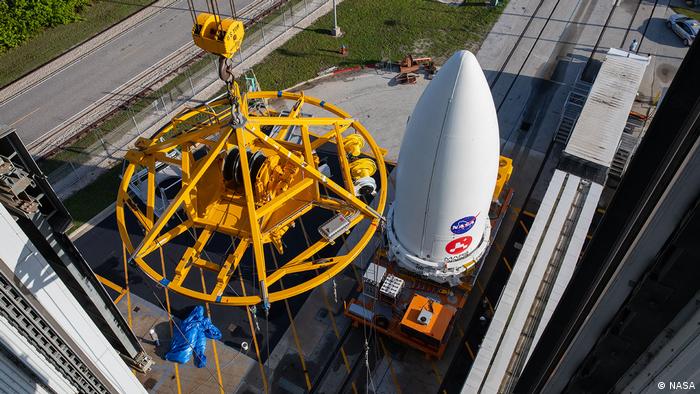
NASA's rover Perseverance has landed on Mars
Everything prepared
NASA engineers loaded the Mars rover Perseverance onto an Atlas V rocket at the start of July 2020. The rocket took off on July 30 from Cape Canaveral, Florida. The rover arrived at the orbit around Mars in early February 2021.
-

NASA's rover Perseverance has landed on Mars
Presentation in a clean room
This is how Perseverance looked when it was presented to the public in 2019. The rover will support NASA's Curiosity rover, the most modern rover until Perseverance came along. The new rover weighs a little over a ton — 100 kg (220 pounds) more than its predecessor. And at 3 meters (10 ft) long, it's also 10 centimeters longer as well.
-

NASA's rover Perseverance has landed on Mars
More performance
Perseverance can be loaded with more research instruments and sensors than its predecessor. And its gripper arm, with its cameras and tools, is stronger, too. The rover can collect samples from Mars. It's got 23 cameras and many other instruments. One mission is to test whether it's possible to extract oxygen from Martian rock. But, hey, what's that standing next to the rover on the ground?
-
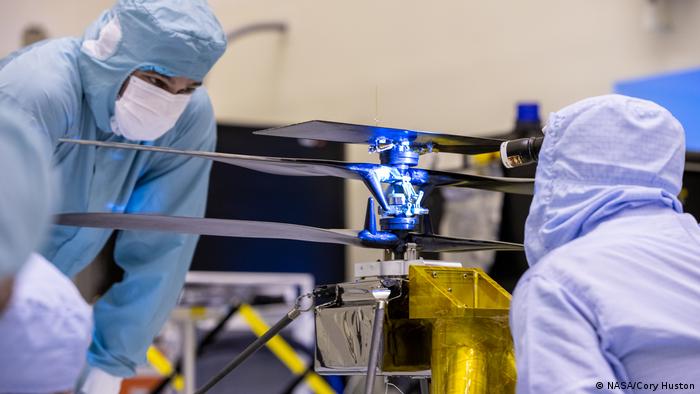
NASA's rover Perseverance has landed on Mars
A small drone
That's right! Perseverance has a helicopter onboard. That's never happened on a planetary mission before. The helicopter is completely new territory for its developers. It will be the first time they're able to experience and collect data from flight in atmospheric conditions that are different from those on Earth, and in a gravity that is about a third of our own.
-
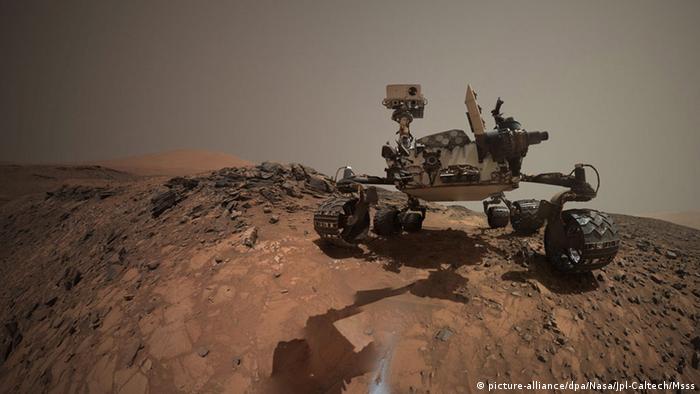
NASA's rover Perseverance has landed on Mars
The robotic giant
Curiosity is the largest and most modern of all Mars rovers currently deployed. It landed on August 6, 2012, and has since traveled more than 21 kilometers (13 miles). It is much more than just a rover. Its official name is "Mars Science Laboratory," and it really is a complete lab on wheels.
-
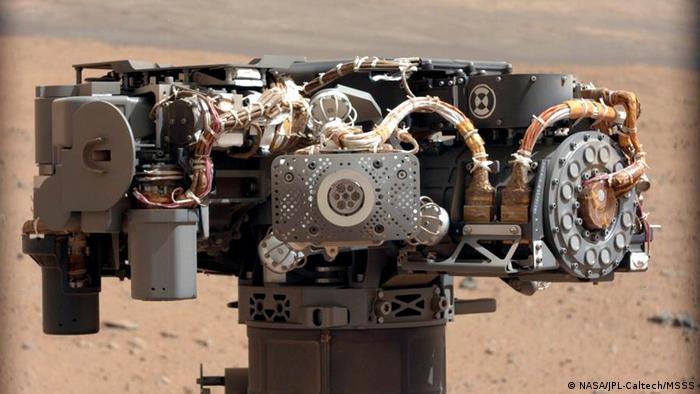
NASA's rover Perseverance has landed on Mars
What's in it?
For example, it contains a special spectrometer, which can analyze chemical compounds from a distance with the help of a laser; a complete meteorological station that can measure temperature, atmospheric pressure, radiation, humidity and wind speed; and most importantly, a chemistry lab that can run detailed analyses of organic compounds and is always on the hunt for traces of alien life.
-
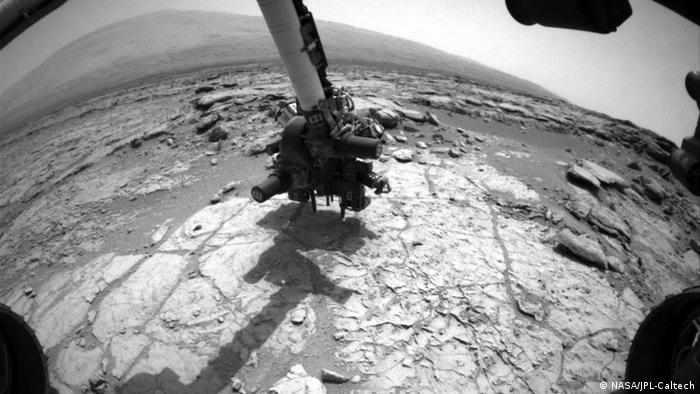
NASA's rover Perseverance has landed on Mars
Not just scratching the surface
Curiosity has shown that life would theoretically be possible on Mars. But it hasn't discovered any life, yet. The robot's arm is equipped with a full power drill. Here, it's taking a sample in "Yellowknife Bay" inside the Gale Crater.
-
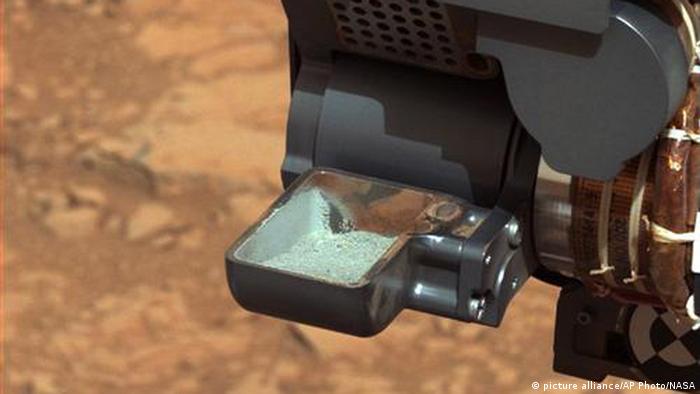
NASA's rover Perseverance has landed on Mars
Off to the lab!
The Mars dust is processed by a large number of instruments. First, it's filtered and separated into different-sized particles. Then, those get sorted and sent off to different analytical laboratory machines.
-
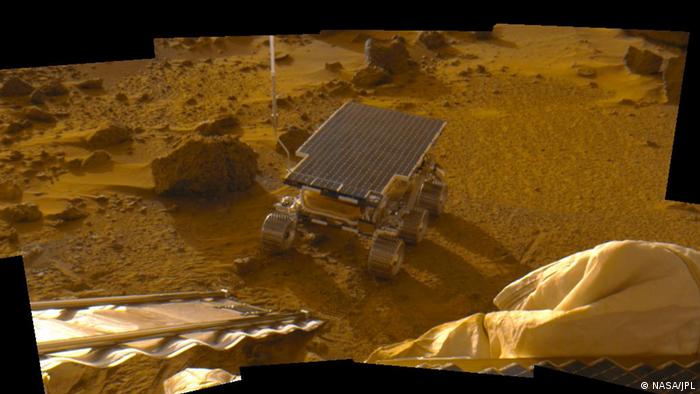
NASA's rover Perseverance has landed on Mars
A tiny predecessor
Curiosity's predecessors were much smaller. On July 4, 1997, the small Mars rover Sojourner left its first tire tracks behind in the dust of the red planet. It was the first time a mobile robot had been left to its own devices there, equipped with an X-ray spectrometer to conduct chemical analyses and with optical cameras.
-
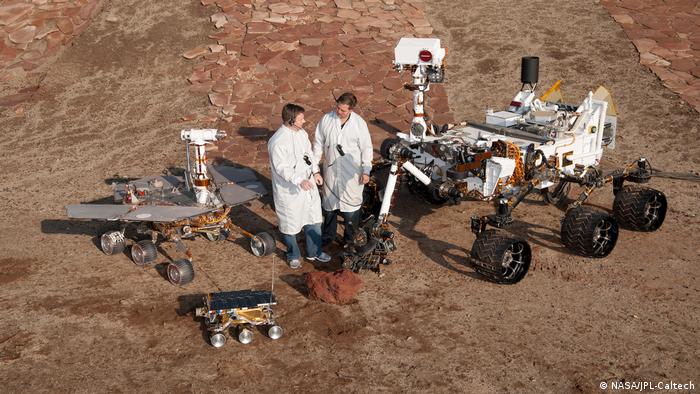
NASA's rover Perseverance has landed on Mars
Size comparison
Three rover generations. (The tiny one up front is Sojourner.) At 10.6 kilograms (23 pounds), it's not much bigger than a toy car. Its top speed: 1 centimeter per second. Opportunity weighs 185 kilograms — roughly the equivalent of an electric wheelchair. Curiosity is as big as a small car, at 900 kilograms. The big ones travel up to 4 or 5 centimeters per second.
-
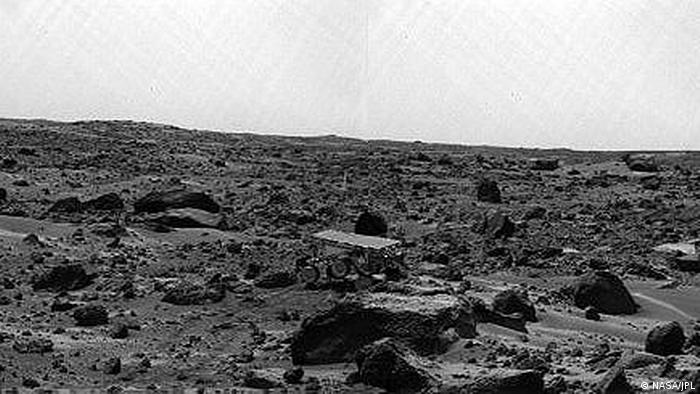
NASA's rover Perseverance has landed on Mars
Almost four months of duty
Sojourner travelled about 100 meters during its lifetime and delivered data and pictures until September 27, 1997. This is one of the last pictures of it, taken nine days before the radio connection broke down. Sojourner probably died because the battery did not survive the cold nights.
-
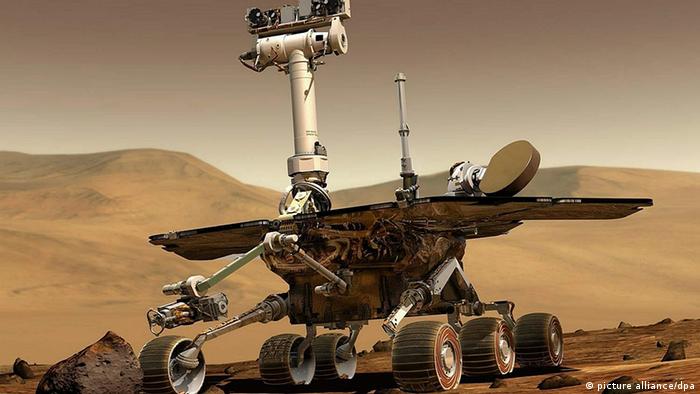
NASA's rover Perseverance has landed on Mars
Paving the way for tomorrow's technology
Without the experience of Sojourner, newer rovers could have hardly been envisaged. In 2004, NASA landed two robots of the same model on Mars: Spirit and Opportunity. Spirit survived for six years, travelling a distance of 7.7 kilometers. The robot climbed mountains, took soil samples and withstood winter and sandstorms. Its sibling, Opportunity, lost contact on February 13, 2019.
-
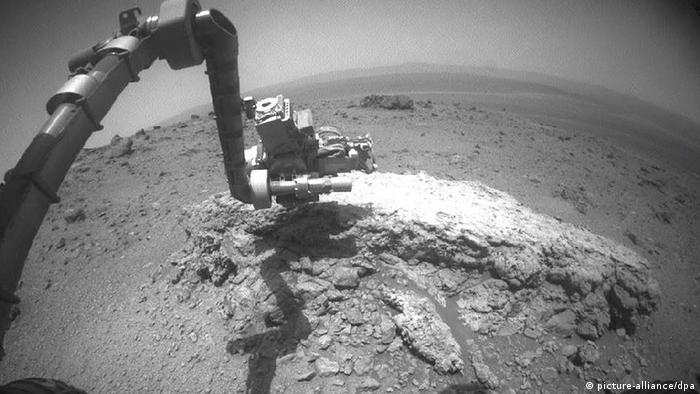
NASA's rover Perseverance has landed on Mars
Lots of gadgets
Opportunity passed the marathon distance of 42 kilometers back in 2015, and to this day, it has covered much more ground than Curiosity. It can take ground probes with its arm. It has three different spectrometers and even a 3D camera. It was last operating in "Perseverance Valley," an appropriate workplace for the sturdy robot, before being incapacitated by a sandstorm.
-
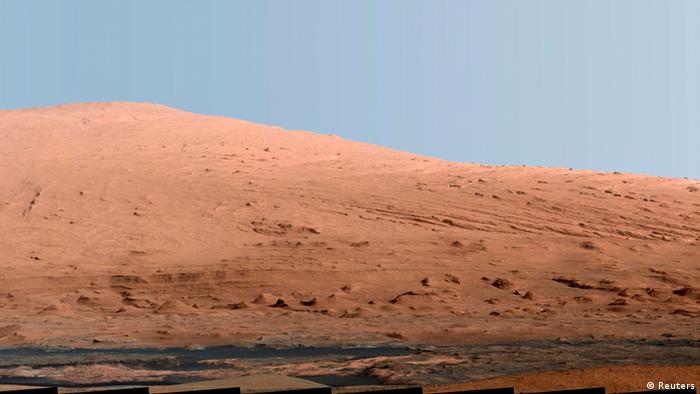
NASA's rover Perseverance has landed on Mars
The red planet's landscapes
This panorama was taken by Curiosity's mast camera. The most modern of the rovers will stay in service as long as possible — hopefully at least another five years. The Martian landscape looks familiar somehow, not unlike some deserts here on Earth. Should we give in to our wanderlust, then — or would it be better leave Mars to the robots?
How To Draw A Space Rover Step By Step
Source: https://www.dw.com/en/nasa-lands-rover-and-first-ever-helicopter-on-mars/a-56550300
Posted by: hamiltonwathre.blogspot.com


0 Response to "How To Draw A Space Rover Step By Step"
Post a Comment